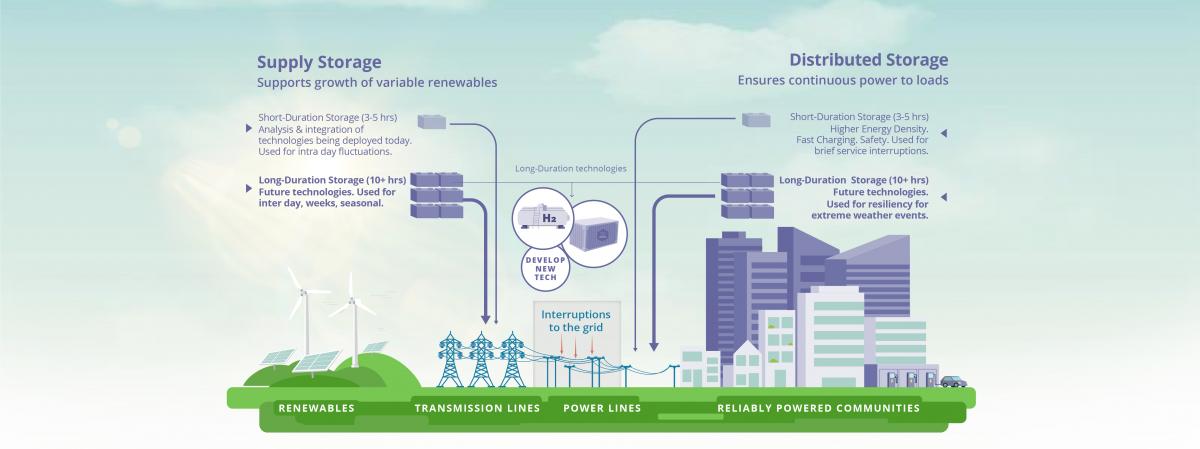Energy Storage
Ten-Year Goal
Develop next-generation energy storage technologies and manufacturing processes to sustain U.S. leadership in energy storage science and technology and meet U.S. market demand in transportation and long-duration stationary applications.

The Challenge
 Energy Storage includes a broad range of technologies that can operate across various time and length scales, and which can transform nearly every aspect of society, from transportation to communication to electricity delivery and domestic security. Demand for simultaneously sustainable, affordable, and resilient sources of power are driving dramatic shifts throughout the electricity sector; shifting away from conventional fossil-fuel fired generation and toward wind and solar photovoltaics. However, the mismatch in timing between when solar and wind resources produce electricity and when consumers use that electricity presents a barrier to their further deployment.
Energy Storage includes a broad range of technologies that can operate across various time and length scales, and which can transform nearly every aspect of society, from transportation to communication to electricity delivery and domestic security. Demand for simultaneously sustainable, affordable, and resilient sources of power are driving dramatic shifts throughout the electricity sector; shifting away from conventional fossil-fuel fired generation and toward wind and solar photovoltaics. However, the mismatch in timing between when solar and wind resources produce electricity and when consumers use that electricity presents a barrier to their further deployment.
Research Summary
ETA’s vision is to develop new, commercially ready technologies that can economically address the need for energy storage to electrify the transportation sector and provide sustainable, resilient electricity to the grid. This initiative will examine market use cases for these technologies, establishing a techno-economic pathway to commercialization and deployment within the grid infrastructure. It combines the area’s long-standing expertise in developing novel chemical, electrochemical, and thermal technologies with policy analysis that can demonstrate the economic use case for these new technologies to relevant stakeholders.
Underlying the initiative is the realization that no economically viable, widely deployable solution for long-duration storage currently exists. The largest source of stationary energy storage in the power system is, by far, from pumped hydro storage, largely due to investments made in the 1970s and 1980s. Almost no new pumped hydro capacity has been developed in the United States in the past two decades due to the difficulty of siting, permitting, and financing this technology. Other economical methods of storage, such as compressed air energy storage, suffer from similar limitations in siting and geographic availability. Li-ion batteries are the current leading storage technology for grid deployments, but they have disadvantages preventing them from being a sustainable technology of choice. What is needed is a long-duration storage technology that can be deployed anywhere, yet maintains or improves upon the low cost of these historical technologies that take advantage of geographic features.

